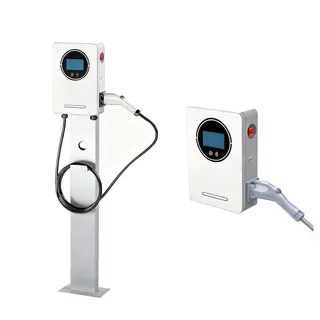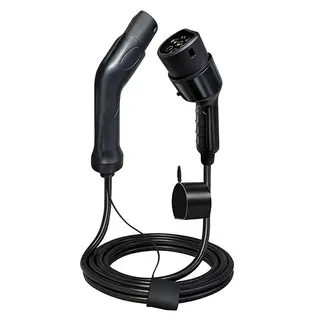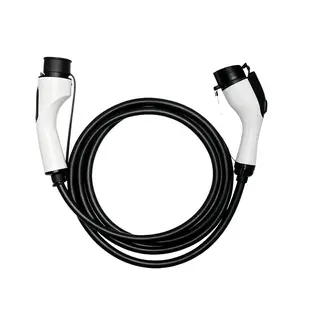With the popularization of electric vehicles, the development of charging technology has become a key factor in promoting this green mode of transportation. At present, there are three main types of charging methods for electric vehicles: battery replacement, AC slow charging, and DC fast charging. These all belong to wired contact charging. However, with technological advancement, wireless charging technology has gradually emerged, bringing new possibilities for charging electric vehicles. This article will deeply explore the charging technology of electric vehicles, including the advantages and disadvantages of wired and wireless charging, as well as the current status and future development direction of wireless charging technology.
Battery replacement is an efficient charging method that replaces the nearly depleted battery pack on the vehicle with a fully charged one, usually completed within ten minutes. This method can effectively solve the problem of electric vehicle range and, at the same time, extend battery life and improve the economy of electric vehicles through centralized charging and professional maintenance of battery packs. For users, they can choose to buy a car without buying the battery, thereby reducing the one-time purchase cost. In addition, charging during off-peak electricity hours can further reduce charging costs.
However, battery replacement also has its limitations. Since battery packs are relatively heavy, professional personnel and equipment are required to replace the batteries. How to achieve the standardization of battery boxes and the practicality of quick battery replacement is the key to the popularization of this model. At present, battery replacement technology has been applied in some specific scenarios, such as taxis and logistics vehicles, but in the field of private cars, its promotion still faces many challenges.
As a traditional method of charging electric vehicles, wired charging, although relatively mature in technology, also exposes some limitations in practical applications. These limitations not only affect the user's charging experience but also, to a certain extent, restrict the further popularization of electric vehicles.
AC slow charging provides electric energy through AC charging piles, and the onboard charger completes the AC-DC conversion. The charging power of this method is generally not high, and the charging time is usually 5–8 hours. Although the charging current is small, which can reduce the heat generation of the battery during the charging process, improve charging efficiency, and extend battery life, its biggest problem is that the charging time is too long. This charging method is suitable for use at night or when parking for a long time, but for users who need urgent charging, it is obviously inconvenient.
DC fast charging completes the AC-DC conversion through an off-board charger. The charging power is relatively high, and the regular charging time is about 3–4 hours. It can even provide fast charging within 20 minutes to 2 hours. This charging method provides rapid charging with large current, generally between 150–400 amperes. However, frequent high-current fast charging will greatly shorten the battery life and put higher requirements on the specifications of the charging connectors and the capacity of the charging facilities. In addition, the large current variation caused by fast charging will impact the power grid, cause voltage fluctuations in the public grid, and the large amount of harmonics generated by high-power chargers will also affect the power quality of the public grid.
Wired charging technology has the following advantages: energy conversion is obtained at one time with little power loss, energy-saving and environmentally friendly; the AC-DC conversion occurs once, and there is no medium or high-frequency electromagnetic radiation; the technical threshold of charging equipment such as charging piles and chargers is not high, the economic investment is small, and maintenance is convenient; the adjustable range of charging power is wide, suitable for energy replenishment of various power battery voltage and current levels.
However, wired charging technology also has some disadvantages: the movement and handling of charging equipment and long power leads make manual operation cumbersome; the public land area occupied by charging stations and charging equipment is too large; during manual operation, excessive wear of the equipment and other potential safety hazards are prone to occur.
Although wired charging technology is mature, it also has some limitations. With the development of science and technology, wireless charging technology has emerged, bringing new solutions for electric vehicle charging. Next, we will explore wireless charging technology to see how it becomes an important choice for future charging methods.
As another major technological innovation in the field of new energy vehicles, wireless charging technology is gradually changing people's charging habits. It eliminates many inconveniences of traditional wired charging and provides strong support for the popularization and promotion of new energy vehicles. Wireless charging technology configures wireless charging modules on intelligent roads and uses solar energy and other new energy sources to provide power, greatly reducing the power battery capacity equipped in electric vehicles, saving energy and reducing emissions, and reducing the operating costs of electric vehicles.
Wireless charging technology has the following advantages: convenient and safe to use, no risk of sparks or electric shock, no dust accumulation and contact loss, no mechanical wear and corresponding maintenance problems, and can adapt to various harsh environments and weather conditions. These advantages make wireless charging technology have great development potential in the future field of electric vehicle charging.
The wireless charging technology of electric vehicles is based on the principle of resonant electromagnetic induction, which is similar to the principle of wireless charging of mobile phones. It transmits current through the magnetic coil in the charger to the corresponding coil at the bottom of the car. When the two are aligned, charging begins. The technology is efficient and fast, with charging efficiency reaching 90–93%, and can provide up to 20 kW of charging power, equivalent to Level 2 charging speed. Although the charging speed equivalent to that of superchargers has not yet been achieved in the market, this technology is gradually receiving attention and is expected to become more widespread as the electric vehicle market expands.
Wireless charging technology for electric vehicles is mainly divided into two forms:
Static Wireless Charging: By installing a charging pad at the parking location, the vehicle automatically starts charging when parked, without manual plugging or unplugging of charging cables. Although this method improves convenience and solves the safety problems of cable connection, it does not fundamentally improve the range problem of electric vehicles.
Dynamic Wireless Charging: Also known as "charging while driving," it involves installing charging coils on the road so that vehicles receive energy through the receiver under the chassis while driving. The development and implementation of this technology can significantly reduce the range anxiety of electric vehicle drivers, making the driving experience closer to that of traditional fuel vehicles. Although dynamic wireless charging technology is still in its early stages, and challenges such as energy transmission efficiency, road construction costs, and compatibility issues need to be overcome, its potential is huge and is expected to become one of the important solutions to the range anxiety of electric vehicles in the future.
Wireless charging technology mainly includes four methods: electromagnetic induction, magnetic resonance, electric field coupling, and radio waves. Among them, mobile phones and electric vehicles mainly adopt electromagnetic induction and magnetic resonance methods.
Electromagnetic Induction Type: High charging efficiency but short transmission distance, with strict position requirements. The most common wireless charging technology mainly transmits electric energy wirelessly through the principle of electromagnetic induction, which is consistent with the working principle of a transformer. When the primary coil is connected to an AC power source of a certain frequency, according to the principle of electromagnetic induction, the secondary coil will generate induced voltage, thus transmitting energy from the transmitting end to the receiving end, realizing wireless power transmission. This type of wireless charging technology has limitations: due to the limitation of the air gap between the two coils, the transmission distance is relatively short, only a few centimeters at most, and the air gap also affects the efficiency of power transmission.
Magnetic Resonance Type: Has lower positional requirements and longer charging distance but slightly lower efficiency. The principle is similar to acoustic resonance; as long as two media have the same resonant frequency, energy can be transmitted. The charging distance of this method lies between that of electromagnetic induction and radio wave methods. Its advantages are high transmission power, reaching several kilowatts, and the ability to charge multiple devices simultaneously without requiring precise coil alignment. The disadvantage is high energy loss; the greater the distance and power, the greater the loss, and it is necessary to protect the frequency band used.
Radio Wave Type: Uses radio waves to transmit electrical energy and is another relatively reliable wireless charging method. The most important component of this method is the antenna, which performs energy conversion and transmission. After the transmitter converts electrical energy into electromagnetic waves, the receiving device adjusts the angle and receives the radio waves, converting them back into electrical energy. This wireless charging method has not been deeply studied in the field of electric vehicles.
Dynamic wireless charging highways adopt magnetic coupling wireless power transmission technology. By laying transmitting coils, high-frequency inverters, and compensation networks under the original road surface, a power supply track is formed. During the dynamic wireless charging process of electric vehicles, the transmitting coil can identify and locate the position of the receiving coil. Once the transmitting coil approaches the receiving coil, it automatically starts, transferring electrical energy between the receiving and transmitting coils through magnetic induction, thereby charging the onboard battery pack. When no vehicle passes, the transmitting coil remains off to save energy.
The average driving speed of vehicles on highways is 80 km/h, with a maximum speed of 120 km/h, usually divided into driving lanes, fast lanes, slow lanes, and overtaking lanes. To improve efficiency, dynamic wireless charging lanes are generally set in the fast lanes of two-way lanes. This charging method has the advantages of small equipment footprint and high charging convenience; the charging facilities can operate unattended with low maintenance costs. Compared with traditional charging piles, within the same area, wireless charging can increase the number of vehicles charged, improving space utilization.
Although wireless charging technology shows great potential and advantages, it still faces many challenges in its development and popularization.
The lack of unified charging standards is an important factor limiting the development of wireless charging. A unified charging standard is an indispensable process for the development of wireless charging. At present, there are compatibility problems between wireless charging devices of different manufacturers, which brings great inconvenience to users. In the future, unified charging standards need to be formulated to ensure that electric vehicles of different brands and models can use wireless charging technology.
Wireless charging for electric vehicles requires highly complex technology. Before it becomes widespread and mass-produced, its cost is higher than that of wired charging. Therefore, high costs still hinder the popularization and mass production of wireless charging technology. However, with technological progress and market expansion, the cost of wireless charging technology is expected to gradually decrease in the future.
After electric energy is converted into electromagnetic waves, high-frequency radiation will be generated, and if small animals or metal foreign objects intervene during charging, it will cause faults and pose certain safety risks. Therefore, effective safety measures need to be taken in the design and use of wireless charging equipment to ensure the safety of the charging process.
Judging from the rising trend of wireless charging technology in the field of consumer electronics, this new technology will also develop rapidly in the automotive industry. The popularity of electric vehicles has opened up new market opportunities for wireless charging technology. In the future, with continuous technological advancement and cost reduction, wireless charging technology is expected to become one of the mainstream charging methods for electric vehicles. It will provide users with a more convenient, safe, and efficient charging experience, further promoting the popularization and adoption of electric vehicles.
Overall, the emergence of wireless charging technology not only brings a revolutionary change to the charging method of electric vehicles but also lays a solid foundation for the development of intelligent transportation in the future. With the continuous integration of new energy technologies, the Internet of Things, and intelligent infrastructure, wireless charging will gradually achieve seamless connection with roads, parking lots, and even urban energy networks, building a more efficient and environmentally friendly transportation ecosystem. Although it still faces multiple challenges such as cost, standardization, and safety, these problems will eventually be solved with technological progress and industrial collaboration. In the future, wireless charging will no longer be a technological attempt but will become a daily part of green travel, allowing electric vehicles to truly achieve "charging while driving," leading global transportation toward a new era of intelligence and sustainability.



